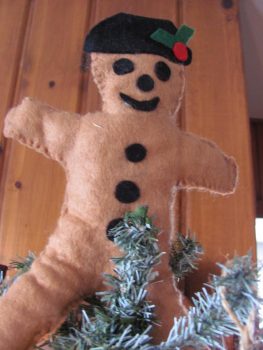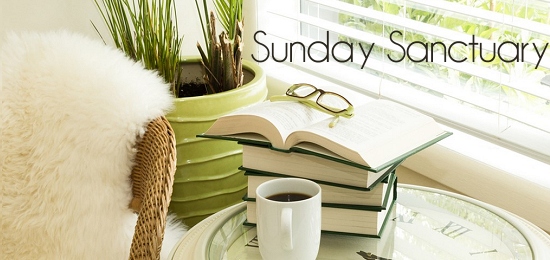
I sent a one line email to one of my most trusted friends:
“I almost applied for a secretarial job today.”
It was a distilled synopsis hiding behind the deeper truth: I was smack-dab in the middle of a crisis of faith.
Weeks earlier, I had completed the process of turning two of my digital coaching courses into hold-in-your-hand 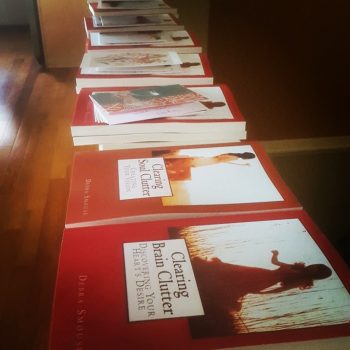 books. It should have been a pinnacle moment for the year, but once I got beyond the first giddy experience of seeing five years of my work become flesh, I felt like the gardener who’d made the mistake of planting too many zucchini plants in her garden and was secretly leaving baskets of veggies on her neighbor’s porch in the dead of night.
books. It should have been a pinnacle moment for the year, but once I got beyond the first giddy experience of seeing five years of my work become flesh, I felt like the gardener who’d made the mistake of planting too many zucchini plants in her garden and was secretly leaving baskets of veggies on her neighbor’s porch in the dead of night.
In my office was an unopened box from Amazon containing the book of a friend. I left the box untouched for days, lost in feeling both aggravated and downtrodden. I had been a strong supporter of every book written by friends and happily touted – and often purchased – the many digital courses created by friends and colleagues. Yet, in the midst of that week, I was feeling that no one was willing to step up and support me.
I knew for a fact that none of my friends or colleagues had purchased either of my books because I had zero sales. Everyone was “zucchini-ed” out and I couldn’t even give the damn books away!
Being a maker of any sort is often a solo act and can easily lead to the feelings of aloneness and isolation. My partner, John, is a huge supporter of my work, but he doesn’t quite get what my work is, let alone what it feels like.
So, the morning an email from a head hunter arrived in my inbox touting the “perfect” job for me, instead of the immediate “no thank you” I had penned dozens of times over the last six years, I clicked on the link and read the job description:
“Executive Assistant to CEO of COMPANYNAME. Need project management skills (preferably with PMP Certification), top-notch communication skills, both verbal and written, flexible attitude, be a great problem solver, and posses a deep understanding of the demands and stresses of an executive of a multi-million dollar business. Pet lovers only. Great benefits, including health, dental, and 401k. Bonus: bring your dog to work.”
I began to imagine going to an office and being around people. Every Day. I envisioned the need for sheath dresses, 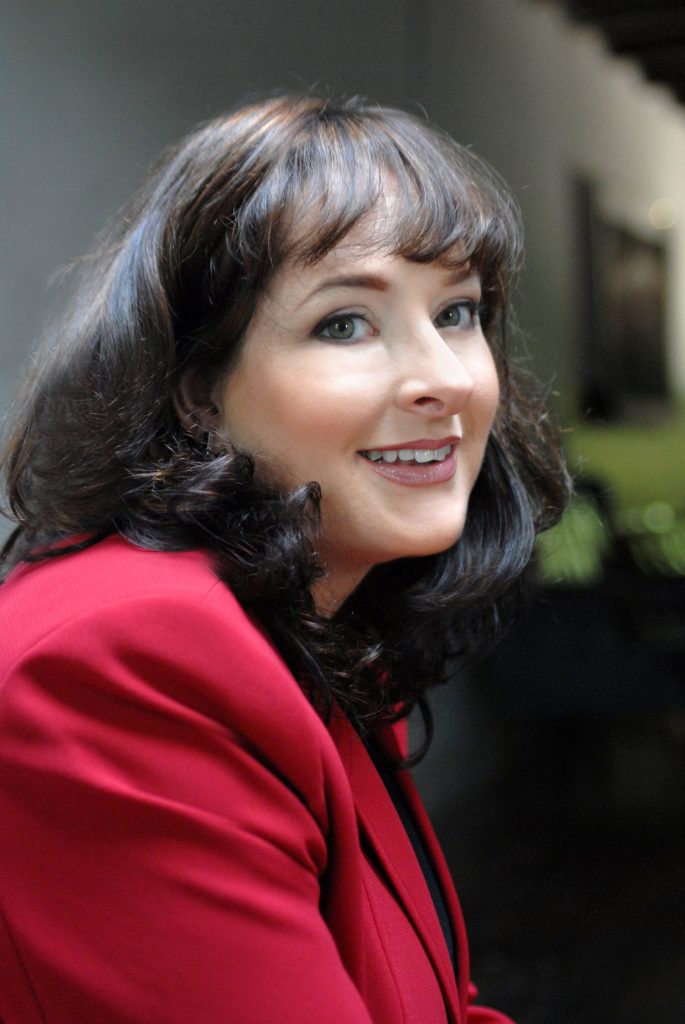 skirts, pantsuits, and high heels. All clothing I have loved wearing in my past life when I was a full-time consultant. I fantasized about an office Christmas Party! And though we are currently pet-less due to our frequent travel, daily affection – given and received – from well-behaved dogs whenever I wanted!
skirts, pantsuits, and high heels. All clothing I have loved wearing in my past life when I was a full-time consultant. I fantasized about an office Christmas Party! And though we are currently pet-less due to our frequent travel, daily affection – given and received – from well-behaved dogs whenever I wanted!
Not only was the fantasy I was imagining fulfilling, the job fit another requirement of mine: close to home. So close to home, in fact, that I could easily bike to work if I wanted.
I went as far as sending a quick response to the head hunter that I would give the job a strong consideration. I also dug out my resume, which hadn’t been updated since my last Government Contract seven years earlier.
I will be frank with you: it wasn’t about the money. I am in the position that every writer I know desires to be in: no need for a day job to ensure the mortgage gets paid.
It was about the potential to escape the desolate isolation and deeper loneliness of being an extrovert living the life of an introverted creator.
I walked away from my desk. Showered, dressed, and left the house to do one of my go to activities for lonely days: errands. I got a coffee at Starbucks and had a nourishing exchange with my favorite barista, Chase. I strolled through Pier 1 Imports and complimented the manager on the remodeled store. I picked up light-bulbs and giant bags of salt for our water softener (the most awkward bags ever). And then it was off to the Dry Cleaners to drop off John’s suit pants, pick-up of previous left pants and dress shirts left, and to hear the update on the owner’s wife’s cancer treatment and his daughter’s soccer tournament.
Though these errands can seem unimportant or mindless, the last several years of working exclusively at home have taught me to channel my extroverted need to interact with people by seeing the management of household needs as a form of ministry. I have learned to cultivate a connection with strangers that I meet through this tending of our life. I know the names and a few personal details of my favorite grocery store folks. I know that Chase, my 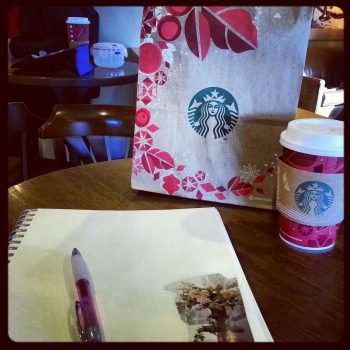 favorite Barista, collects Starbucks Cards from faraway places and have brought him cards from DC and Hawaii for his collection. I know by sight, if not my name, the cashiers at my favorite stores. The ladies at the post office all know me and are genuinely happy to see me when I walk in laden with packages or just to buy some stamps.
favorite Barista, collects Starbucks Cards from faraway places and have brought him cards from DC and Hawaii for his collection. I know by sight, if not my name, the cashiers at my favorite stores. The ladies at the post office all know me and are genuinely happy to see me when I walk in laden with packages or just to buy some stamps.
Yes, I plan the occasional lunch date with girlfriends, but everyone’s lives are busy and few have the time for spur-of-the-moment lunches. Most of them work day jobs.
I forced myself to step back from my surface emotions and examine the deeper, more vulnerable thoughts and feelings.
Did what I do even matter? What was the purpose of what I did each day? Was there a point to continuing toiling away over words that few might ever read? In the sea of the thousands of life coaches these days, did my voice matter? Where was I keeping myself from being happy? How was I squashing my own joy? Was considering a day job just an escape? Was it an excuse steeped in fear of my writing and work?
The Kismet of timing, my phone rings. My girlfriend had finished a work call, gotten my email, and called to confess that she, too, has applied for a job here or there over her decade of being an entrepreneur.
She gives me the permission I need: go for that day job if that’s what my heart is needing. She talks me through the options and reminds me that I am not alone. Despite the fact that I felt so isolated just hours before, I am reminded that every single maker of any sort has moments of fear, doubt, isolation, and a loss of faith in their purpose and work.
I step away from the very lip of the ledge and to a safer distance from diving over. But I keep the edge in sight.
Everyone who chooses to live a creative life will have their own crisis of faith. Though money isn’t everything, having my work seen holds value to me, so where is that balance I need?
Who am I to add my voice to the world? Don’t more important people have something better to say than I? Who am I? Do I matter? Does my work even matter?
My logical side encourages me to get out a pen and paper and review the list of pros and cons of A Day Job VS This Creative –Out of the Box – Life I have worked so hard to create.
My choices over the last seven years have not been in any way unconscious.
Each decision has been calculated carefully with my big goals in mind and the clear understanding of what sacrifices I make, measured side-by-side the trade-offs and advantages of each one. Most of the decisions I have made have come down to the core question: how will this affect the quality of our daily life?
Last year about this time I decided to cut the time I spend on my coaching practice in half. There were two reasons: to have the space to write differently and to have more time to keep house.
Yes, you read that right: I wanted more time to keep house.
No, I didn’t get swept up in a time warp back to the 50’s. You won’t find me vacuuming the couch attired in a dress with stockings, heels, and pearls. However, one of the biggest contributing factors in the quality of our daily life is the way I manage our home. I take pride in the creation of beautiful meals that appear on our table. 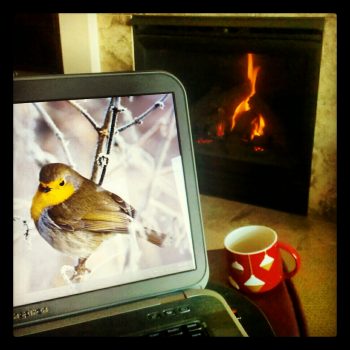 I love that in the evenings, we can cuddle up by the fire with a glass of wine and talk about the day instead of scrambling to pick up the dry cleaning or groceries. Because I manage all the tasks it takes to care for our home, we sleep in, make love, and leisurely enjoy coffee on a Saturday morning instead of me waking with my brain cluttered with a big to-do list.
I love that in the evenings, we can cuddle up by the fire with a glass of wine and talk about the day instead of scrambling to pick up the dry cleaning or groceries. Because I manage all the tasks it takes to care for our home, we sleep in, make love, and leisurely enjoy coffee on a Saturday morning instead of me waking with my brain cluttered with a big to-do list.
I know myself well, and I know that if I were to take a day job, my home life would suffer.
One of the biggest shifts in my ability to create has occurred over the last seven years because, for the first time in my life, I am safe. Safe to be myself. Safe to be vulnerable. Safe to write whatever bounces around in my brain. As a child, my mother criticized and even destroyed years and years of my journal writings. Both my ex-husband and my children pried into any written journal – physical or digital. John never peeks and would never pry.
When Virginia Woolf writes about a woman needing a room of her own, this is the core meaning of that: in order to create, a woman must have privacy. The work needs to be safe from prying eyes until we are ready to share it. That’s one of the paradoxes for me in this creative life: I want my work to be seen, yes. But I need the safety of not having it seen until I make it ready for the world.
There is another side of this crisis of faith that I know to the depths of my soul: a crisis of faith is a sign that you are on the edges of an important evolution. Our brains sense that our souls are trying to change, and because our brains try to keep us “safe” from change, it convinces us, through fear, that what we are about to embark upon is dangerous.
My desire to escape the isolation is sign. And a test.
Do I really desire to live a creative life? Am I really brave enough to take that next step? Am I willing to try new ways of creating? Am I willing to fail? Am I willing to deal with the painful emotions associated with creating so that I can access that deeper sense of joy and happiness?
I may not have all the answers to these questions, but I do know that the almost-fifty-year-old version of Debra has more patience and a deeper sense of hope in the value of a creative life than thirty-year-old Debra ever imagined. The thirty-year-old me – heck, even the forty-year-old me – would have taken the day job. After a few days 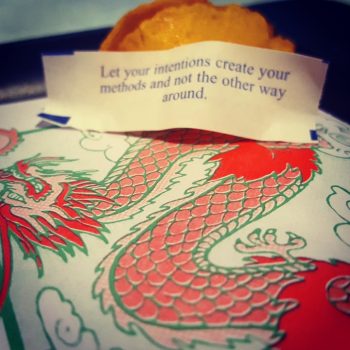 of sitting with the decision, I tell the head hunter that I am honored. And will not be interviewing for the position.
of sitting with the decision, I tell the head hunter that I am honored. And will not be interviewing for the position.
I have weathered this crisis of faith and recognize three distinct truths. One: I am still in the shadow phase of my crisis and will need to diligently tend my bruised heart and tender soul. Two: this isn’t my last crisis in faith. The flip side of this wildly invigorating and profoundly rewarding decision to choose my own creative soul is that with each stage of evolution, there will be seeds of doubt sown side by side with each seed of faith I plant.
And the third truth is one I hope you take with you as well: a crisis of faith means that life is about to get interesting. Very interesting. Because it’s a sign that my creative soul is ready to grow beyond my wildest dreams.
No matter where you may be in your creative journey, know that however you are feeling, you are not alone.
“Have patience with all things, but chiefly have patience with yourself.
Do not lose courage… ”
–St. Francis de Sales
About the Author: Debra Smouse
 Debra Smouse is a self-admitted Tarnished Southern Belle, life coach, and author of Clearing Brain Clutter: Discovering Your Heart’s Desire and Clearing Soul Clutter: Creating Your Vision. When she’s not vacuuming her couch, you’ll find her reading or plotting when she can play her next round of golf. She’s the Editor in Chief here at Modern Creative Life. Connect with her on Twitter, Facebook, and Instagram.
Debra Smouse is a self-admitted Tarnished Southern Belle, life coach, and author of Clearing Brain Clutter: Discovering Your Heart’s Desire and Clearing Soul Clutter: Creating Your Vision. When she’s not vacuuming her couch, you’ll find her reading or plotting when she can play her next round of golf. She’s the Editor in Chief here at Modern Creative Life. Connect with her on Twitter, Facebook, and Instagram.
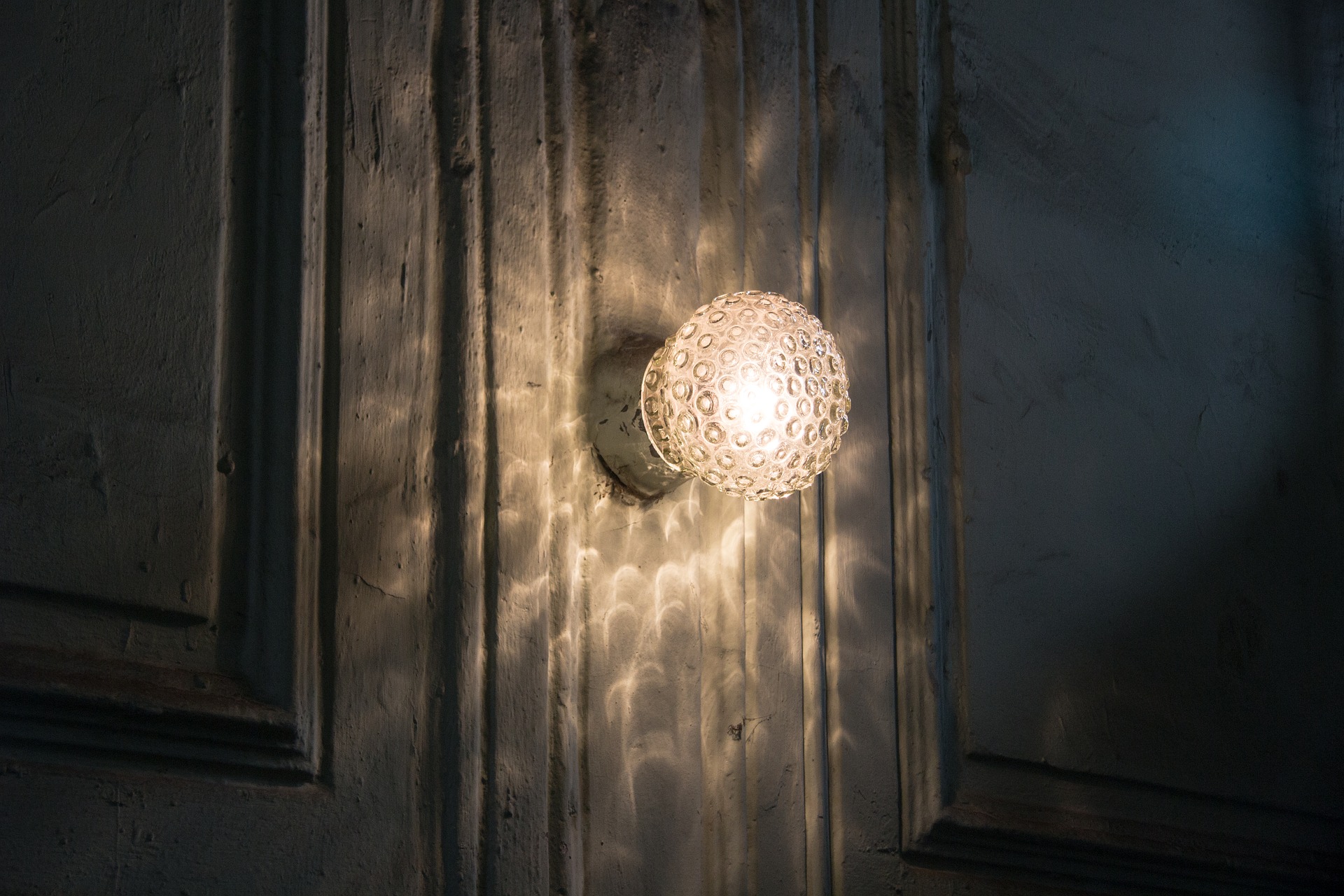
 HILARY PARRY HAGGERTY is a tarot reader, witch, mentor, writer, editor, and teacher. She has been reading tarot for over 18 years (11 years professionally). She was the winner of Theresa Reed’s (The Tarot Lady) Tarot Apprentice contest in 2011, and has taught classes on tarot and spell-work at Readers Studio and Brid’s Closet Beltane Festival. She writes a weekly blog at her website www.tarotbyhilary.com and contributes a monthly tarot blog “Through a Tarot Lens” to www.witchesandpagans.com.
HILARY PARRY HAGGERTY is a tarot reader, witch, mentor, writer, editor, and teacher. She has been reading tarot for over 18 years (11 years professionally). She was the winner of Theresa Reed’s (The Tarot Lady) Tarot Apprentice contest in 2011, and has taught classes on tarot and spell-work at Readers Studio and Brid’s Closet Beltane Festival. She writes a weekly blog at her website www.tarotbyhilary.com and contributes a monthly tarot blog “Through a Tarot Lens” to www.witchesandpagans.com.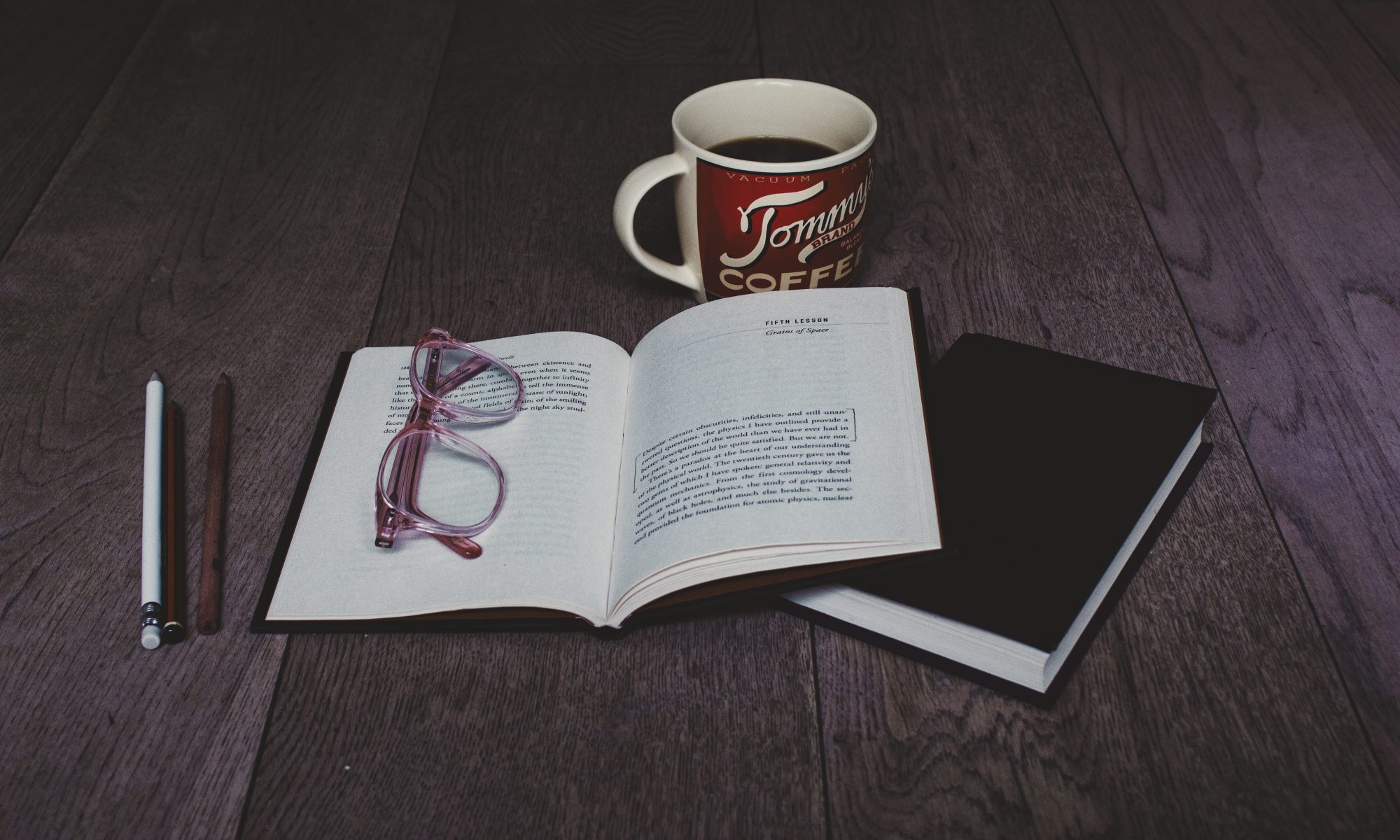
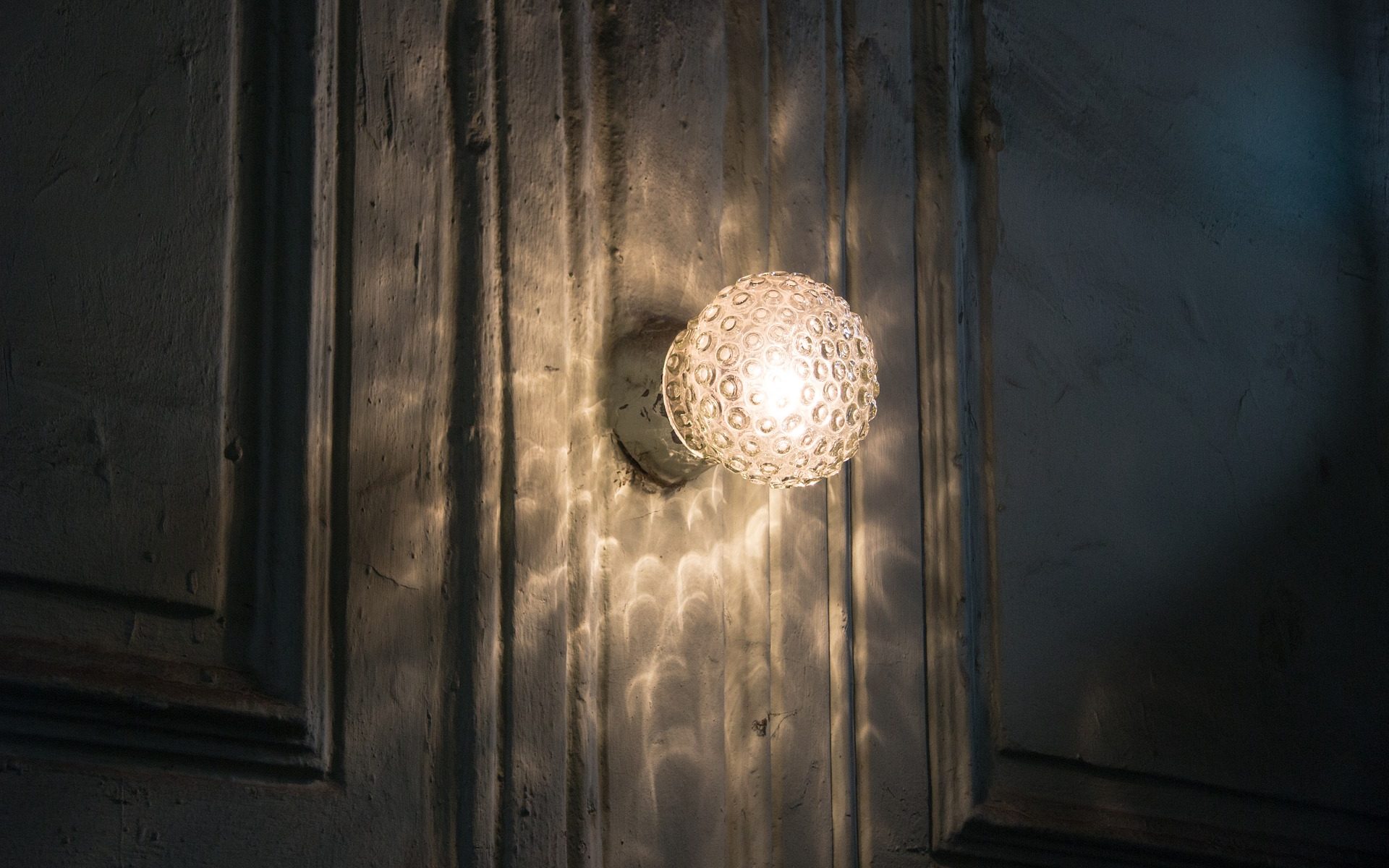
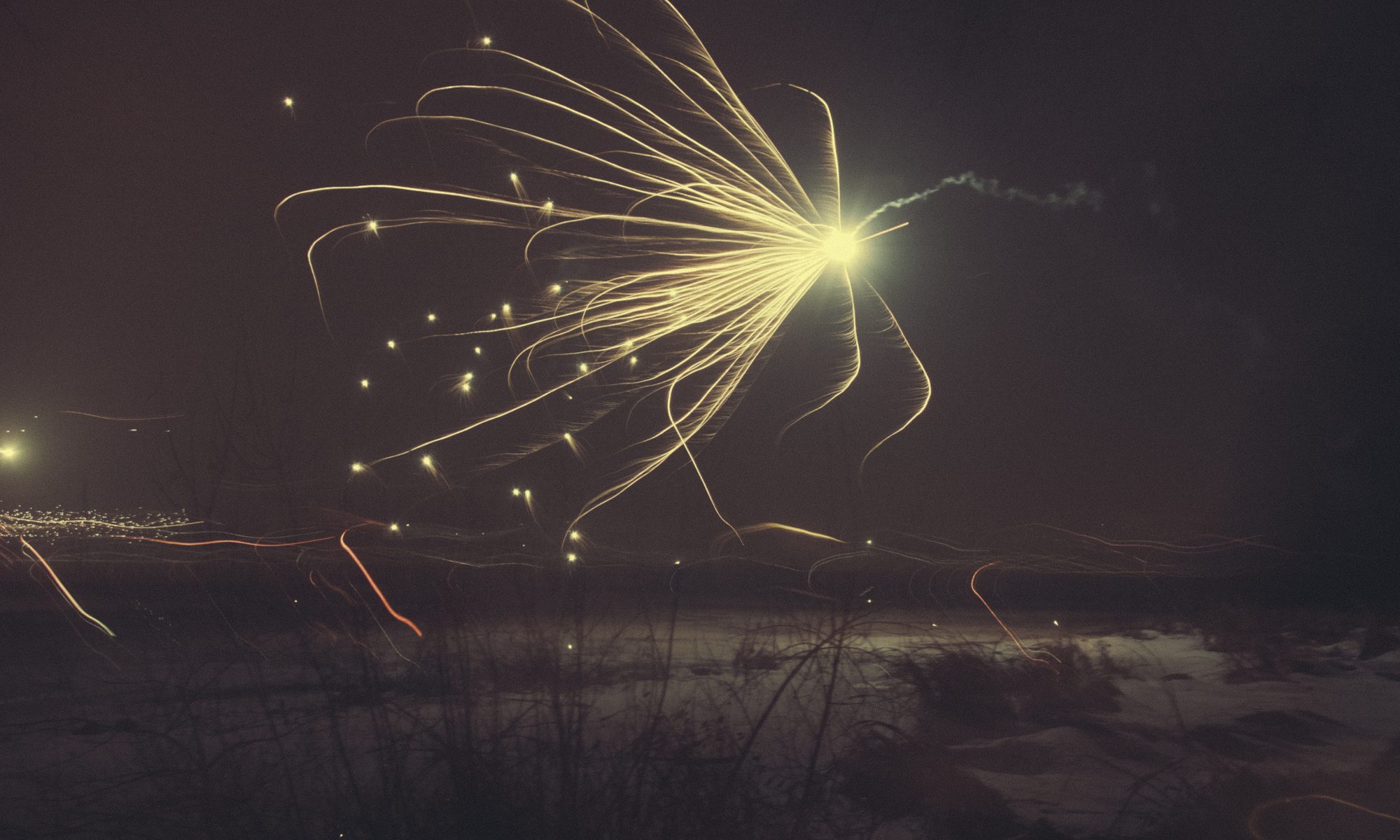
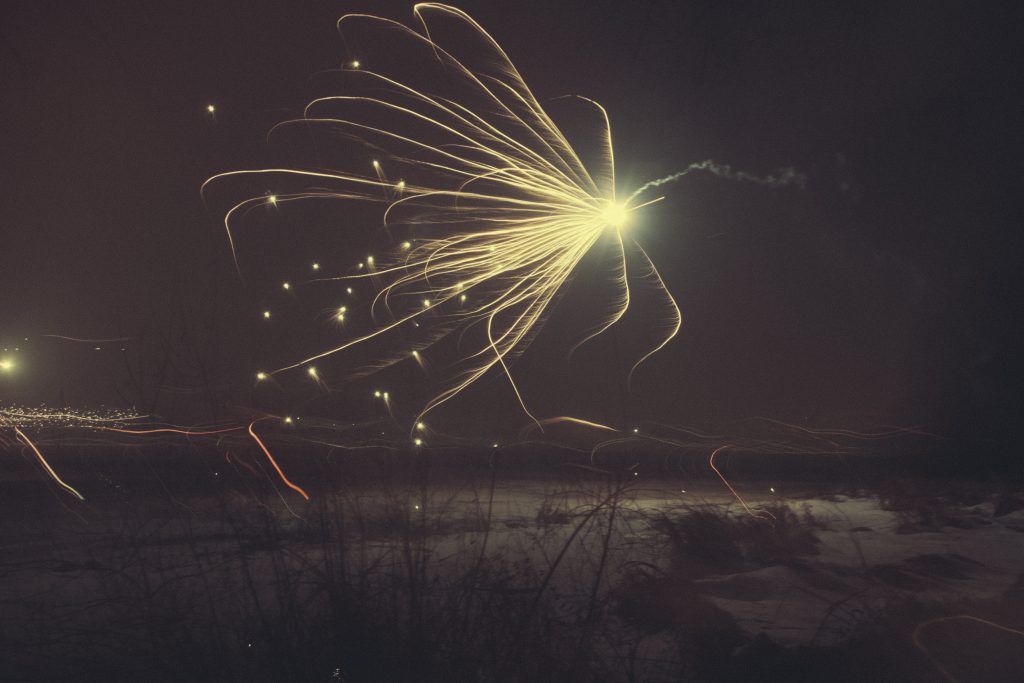
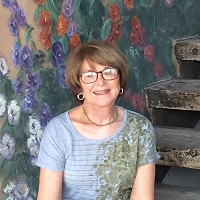 I live in Raleigh, NC where I write, read, and watch birds. My stories have appeared in several magazines, most recently Better After 50, Modern Creative Life, Indiana Voice Journal, and Watching Backyard Birds. I am a Writer in Residence at the Weymouth Center, which is the perfect spot to work on my novel-in-progress. My short story,
I live in Raleigh, NC where I write, read, and watch birds. My stories have appeared in several magazines, most recently Better After 50, Modern Creative Life, Indiana Voice Journal, and Watching Backyard Birds. I am a Writer in Residence at the Weymouth Center, which is the perfect spot to work on my novel-in-progress. My short story, 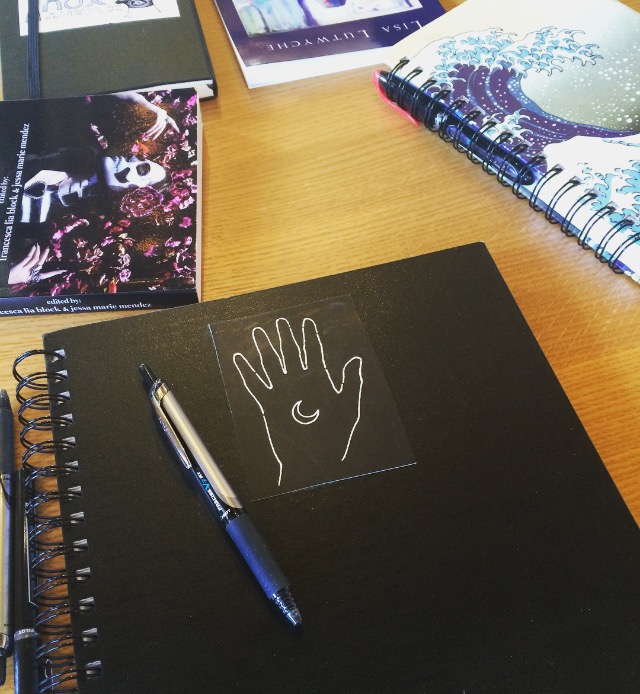
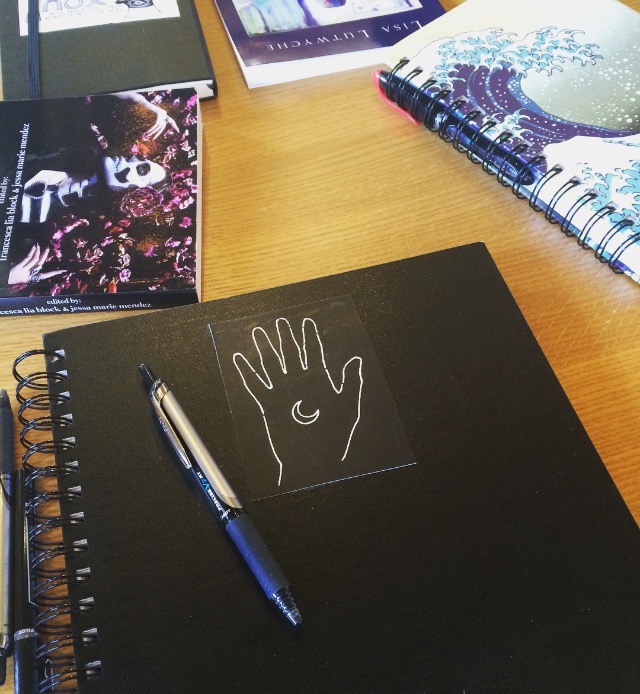
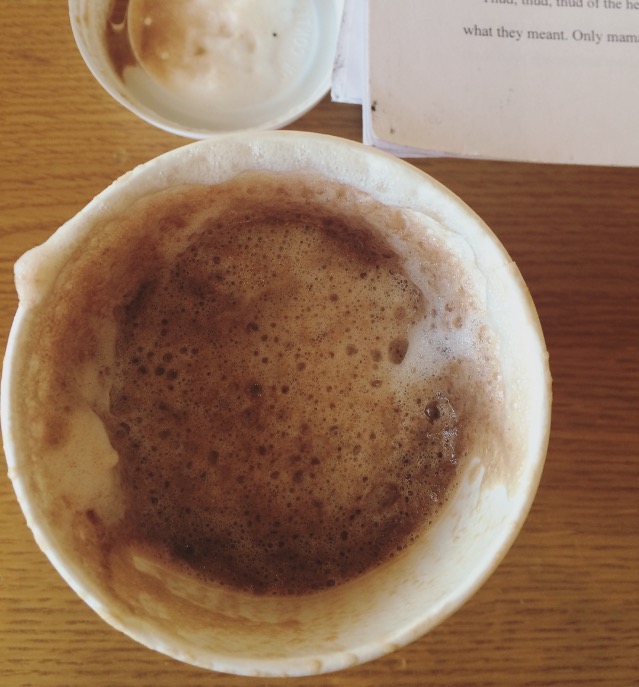
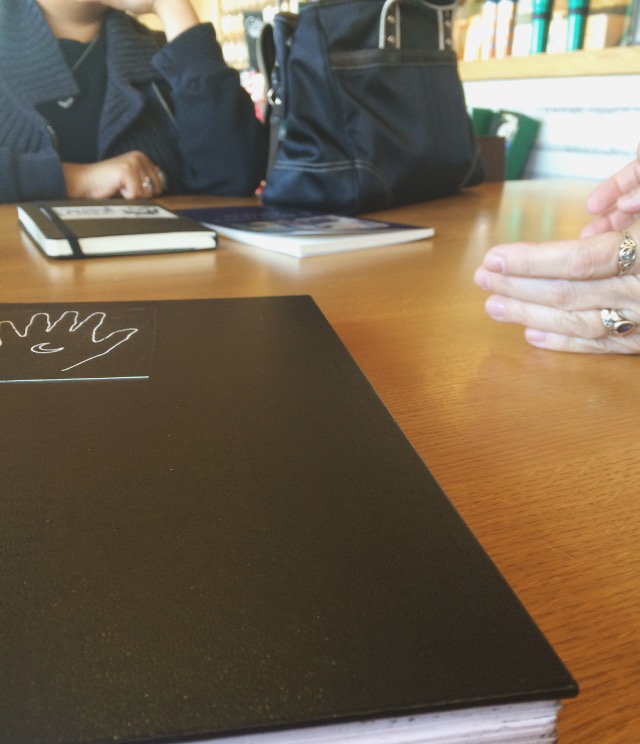
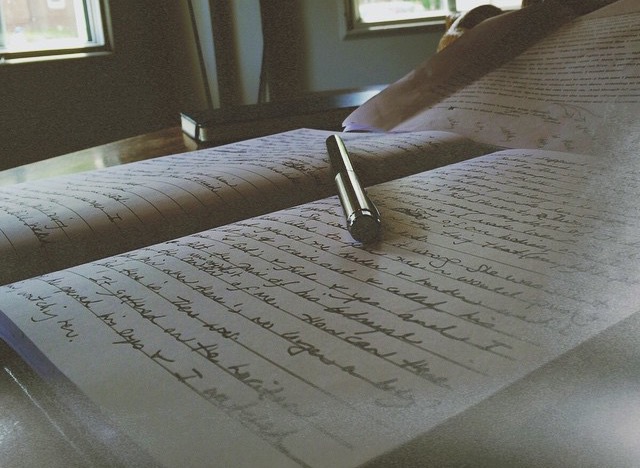
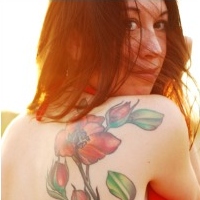 Restless. Sleepless. Book-lover. Wordsmith. Deep roots. Prodigal heart. Teacher. Guide. Wanderer. Witch. Tea, tarot, hot baths, stitchcraft. Curator of narrative relics, remnants, & curiosities.
Restless. Sleepless. Book-lover. Wordsmith. Deep roots. Prodigal heart. Teacher. Guide. Wanderer. Witch. Tea, tarot, hot baths, stitchcraft. Curator of narrative relics, remnants, & curiosities.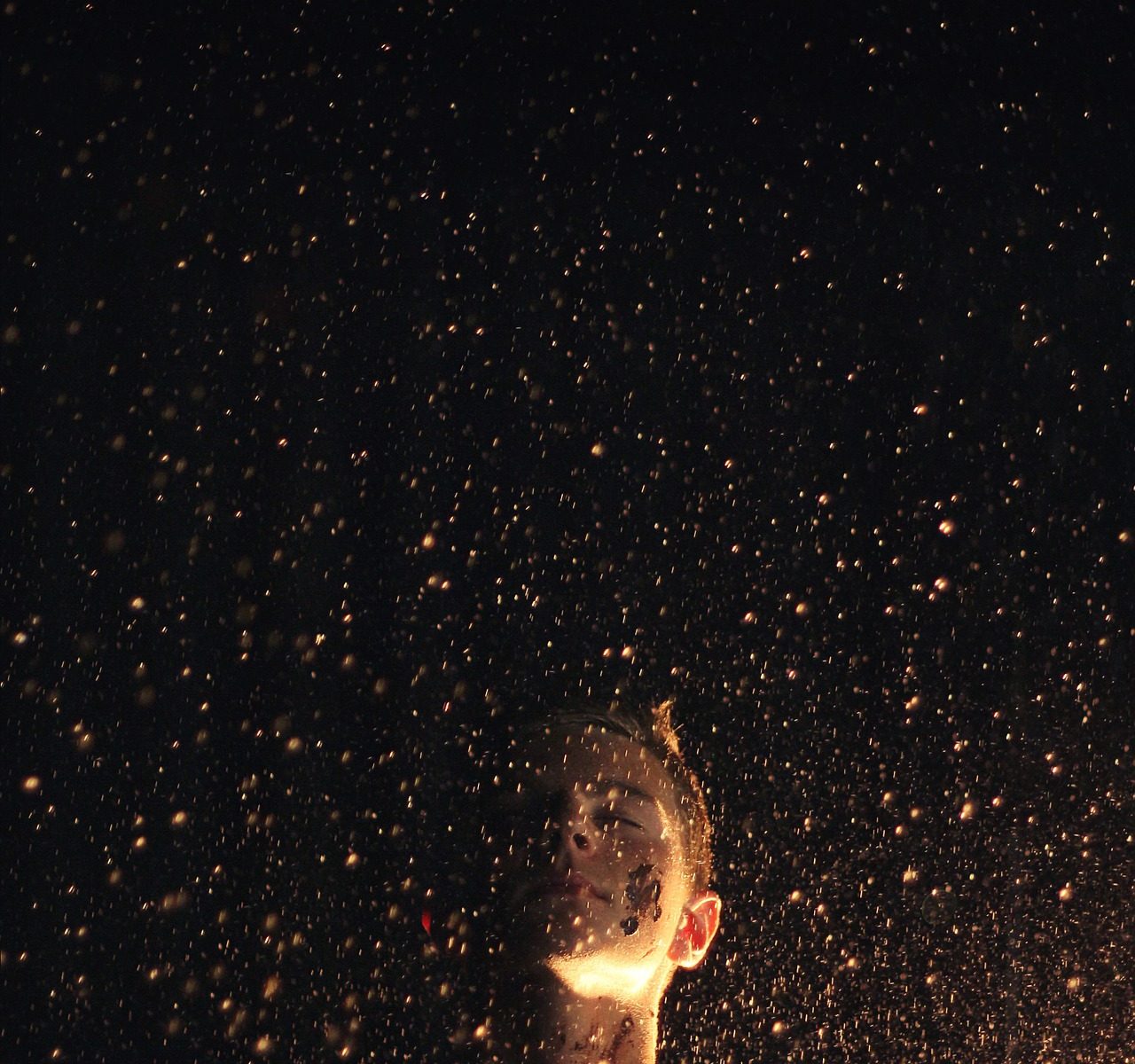

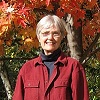 Patricia Wellingham-Jones is a widely published former psychology researcher and writer/editor. She has a special interest in healing writing, with poems recently in The Widow’s Handbook (Kent State University Press). Chapbooks include Don’t Turn Away: poems about breast cancer, End-Cycle: poems about caregiving, Apple Blossoms at Eye Level, Voices on the Land and Hormone Stew.
Patricia Wellingham-Jones is a widely published former psychology researcher and writer/editor. She has a special interest in healing writing, with poems recently in The Widow’s Handbook (Kent State University Press). Chapbooks include Don’t Turn Away: poems about breast cancer, End-Cycle: poems about caregiving, Apple Blossoms at Eye Level, Voices on the Land and Hormone Stew.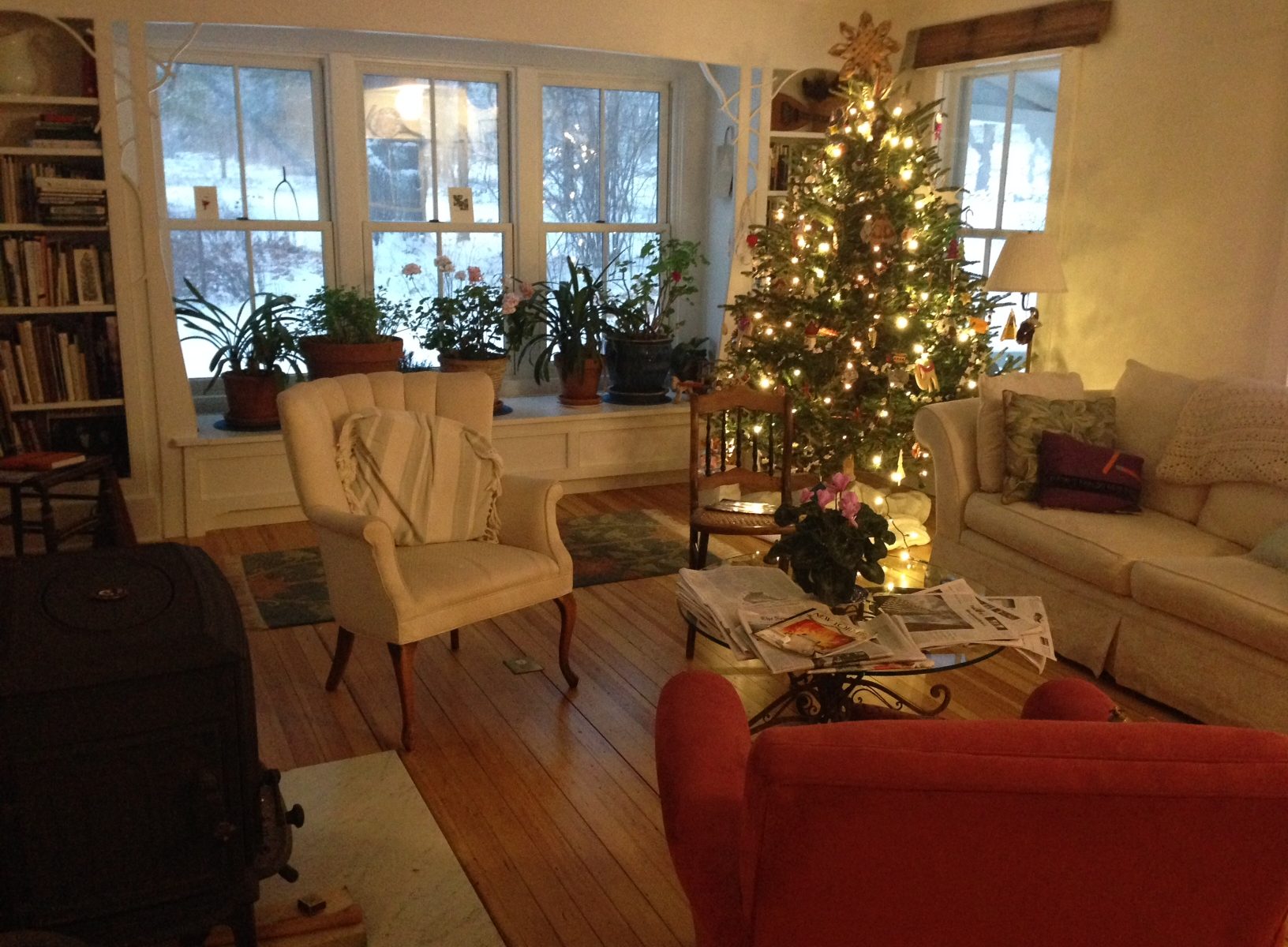

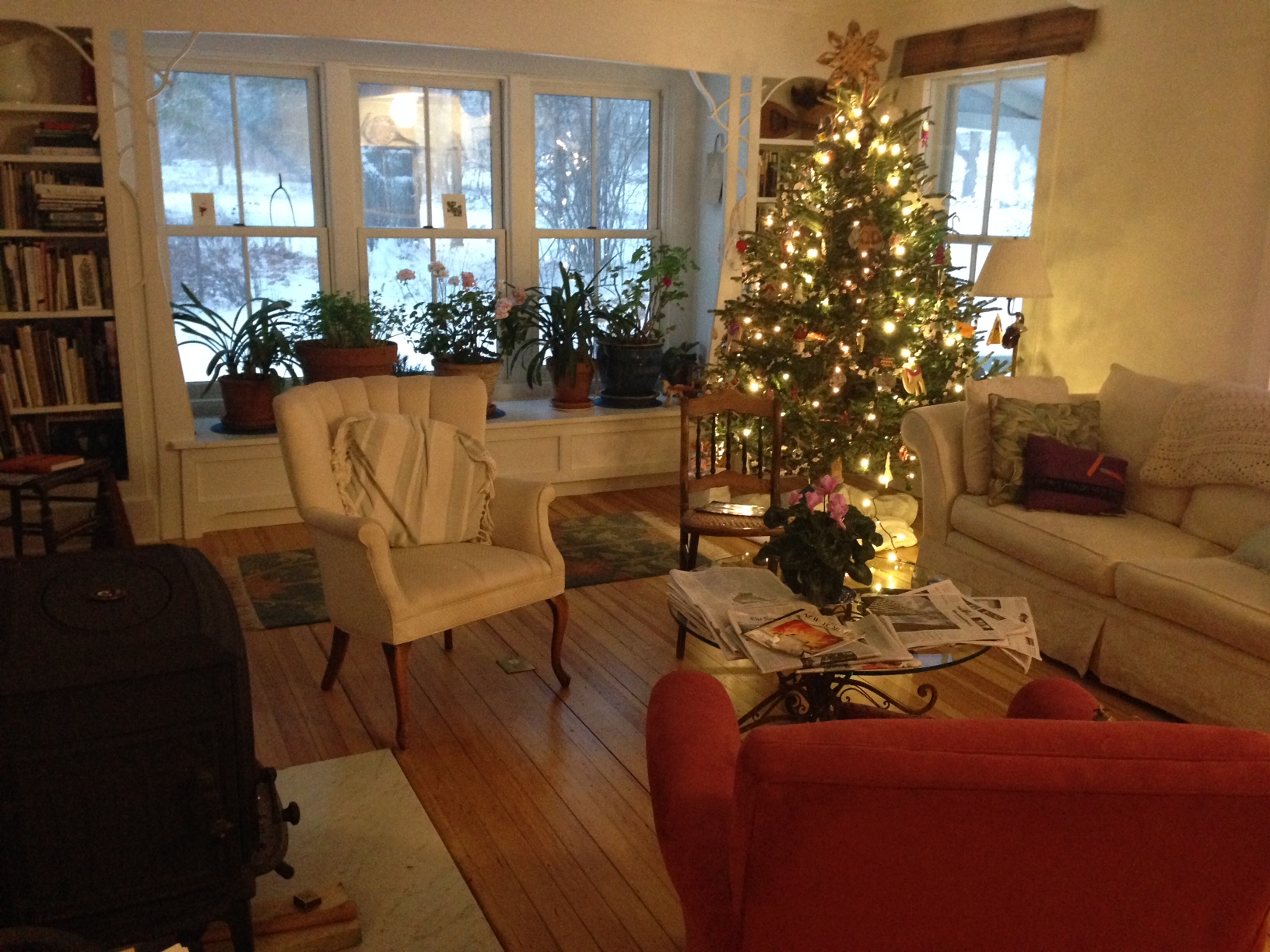
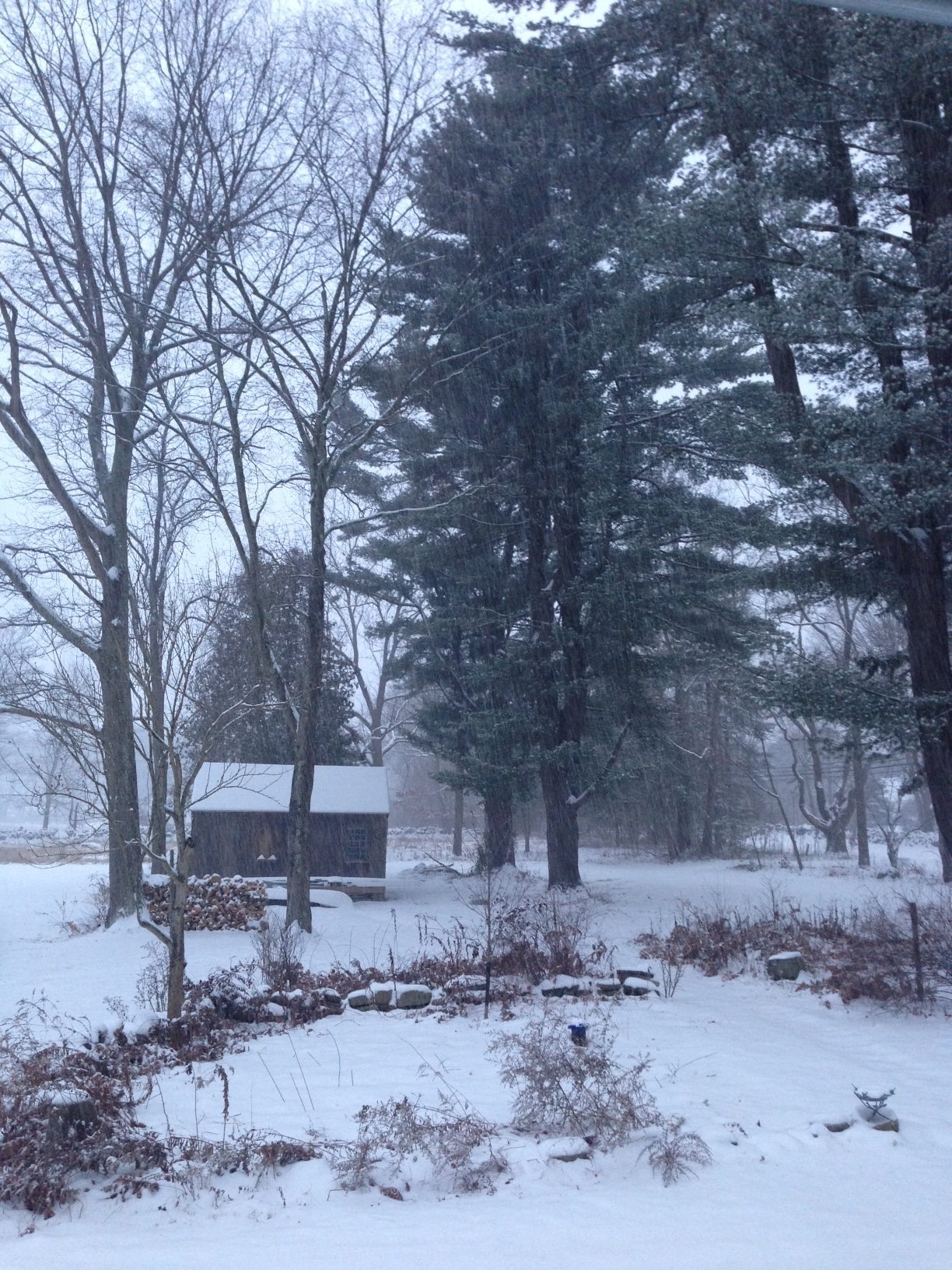
 Melissa is a writer, voice actor, podcaster, itinerant musician, voracious reader, and collector of hats and rescue dogs. She is the author of
Melissa is a writer, voice actor, podcaster, itinerant musician, voracious reader, and collector of hats and rescue dogs. She is the author of 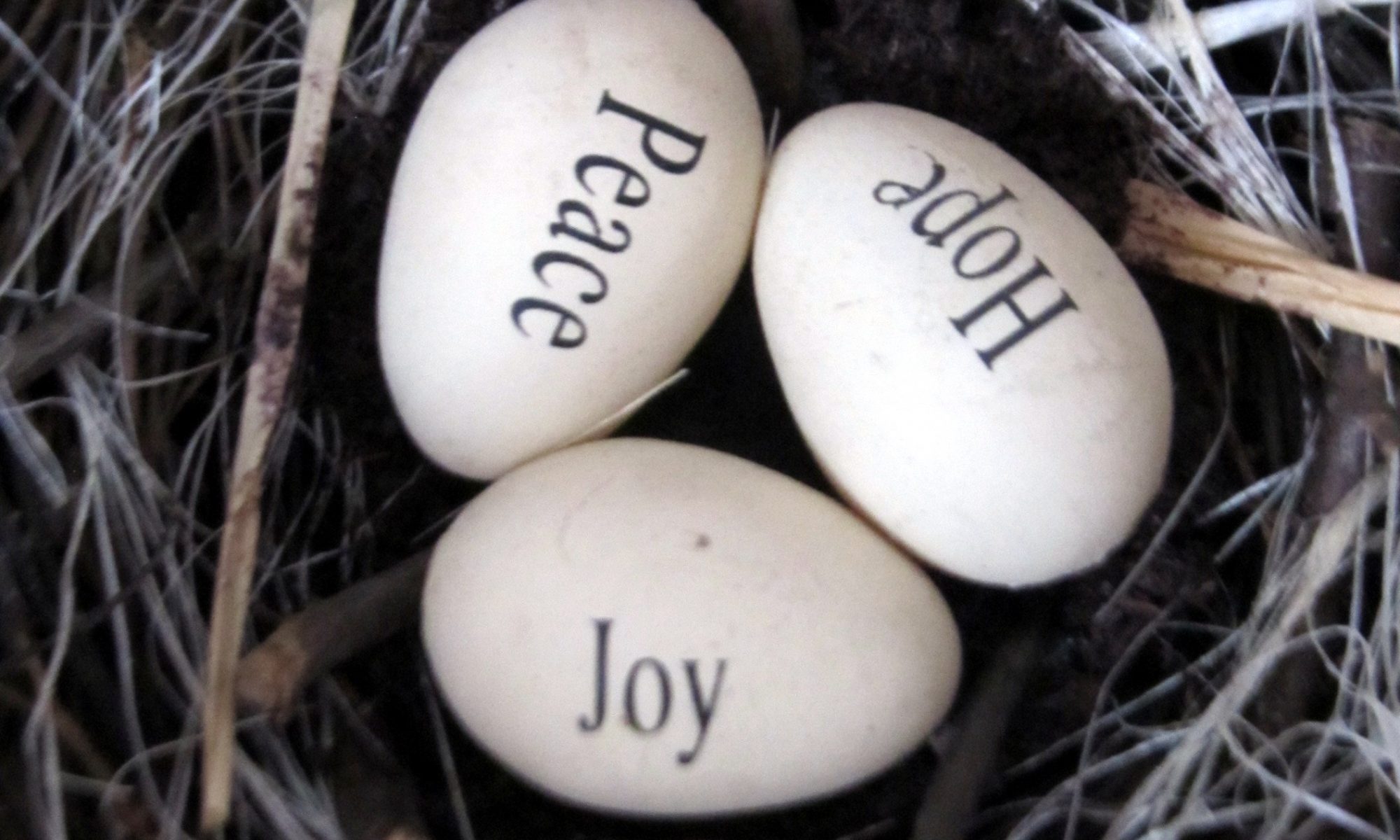
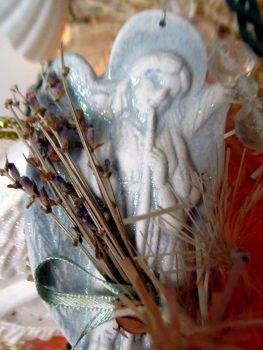 To put this in context, it would be useful to think of me as The Christmas Kid, Mrs. Claus in Training or The One Who Can’t Seem to Quit. I love the holidays and while I refuse to put up one decoration before Thanksgiving, the day after, all bets are off! I have a rather small house and by the time I put Christmas everywhere, I’m often quite sure it is far too over the top and I should have quit long before. And I’m always glad I didn’t!
To put this in context, it would be useful to think of me as The Christmas Kid, Mrs. Claus in Training or The One Who Can’t Seem to Quit. I love the holidays and while I refuse to put up one decoration before Thanksgiving, the day after, all bets are off! I have a rather small house and by the time I put Christmas everywhere, I’m often quite sure it is far too over the top and I should have quit long before. And I’m always glad I didn’t!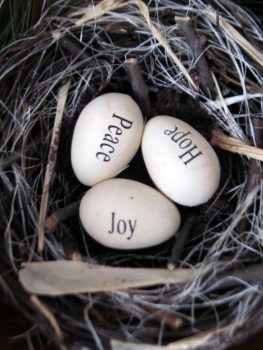 Facing down the holidays during sad times can be a challenge for any of us. That “sadness” may not just be the death of a beloved family member. It can be a divorce or separation that sends a family into divided loyalties and deep grief. It can be the loss of a job or a tragedy, like a house fire. Perhaps a dear family member is in the hospital or has recently faced a catastrophic diagnosis. It may even be despair about the state of the world. We all have our triggers, our life occurrences.
Facing down the holidays during sad times can be a challenge for any of us. That “sadness” may not just be the death of a beloved family member. It can be a divorce or separation that sends a family into divided loyalties and deep grief. It can be the loss of a job or a tragedy, like a house fire. Perhaps a dear family member is in the hospital or has recently faced a catastrophic diagnosis. It may even be despair about the state of the world. We all have our triggers, our life occurrences. After a long career in public broadcasting, Jeanie Croope is now doing all the things she loves — art, photography, writing, cooking, reading wonderful books and discovering a multitude of new creative passions. You can find her blogging about life and all the things she loves at
After a long career in public broadcasting, Jeanie Croope is now doing all the things she loves — art, photography, writing, cooking, reading wonderful books and discovering a multitude of new creative passions. You can find her blogging about life and all the things she loves at 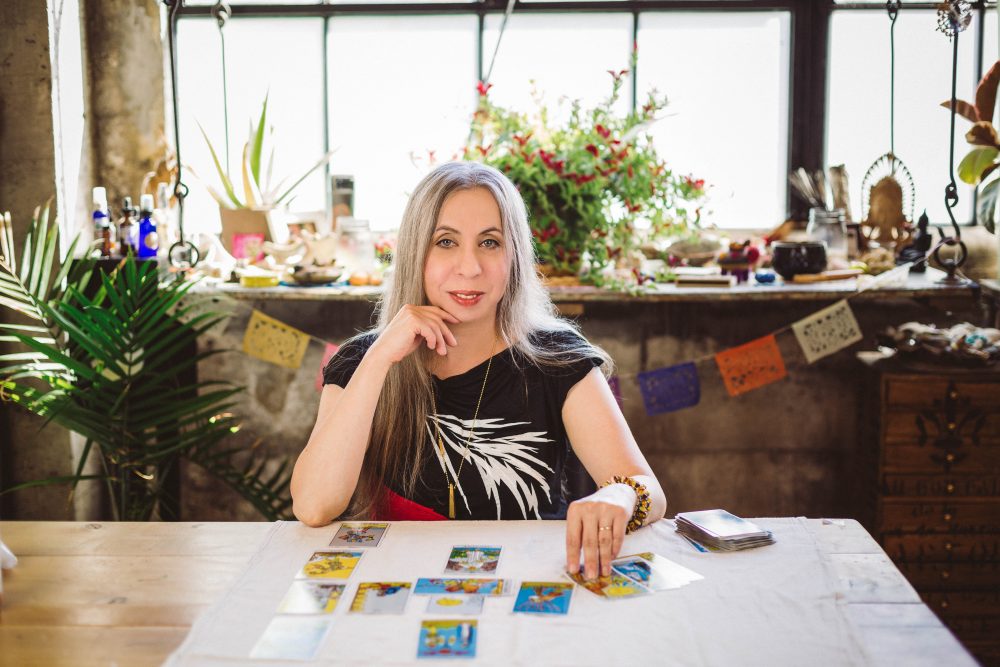

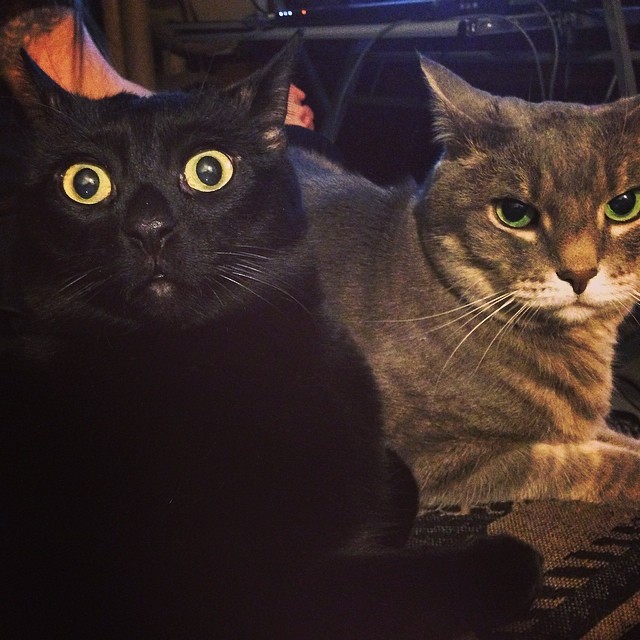
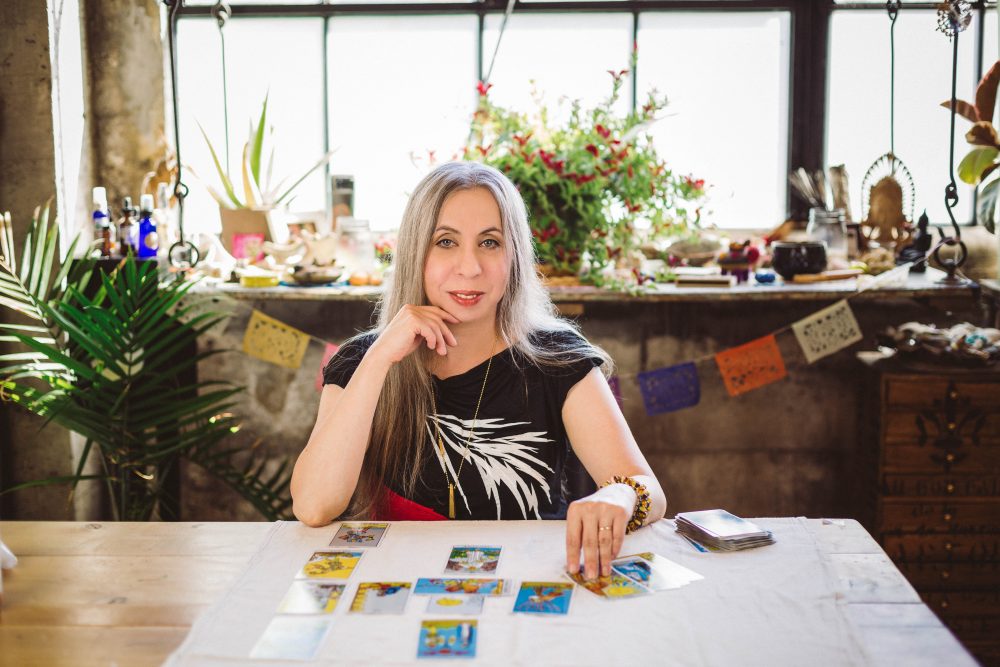
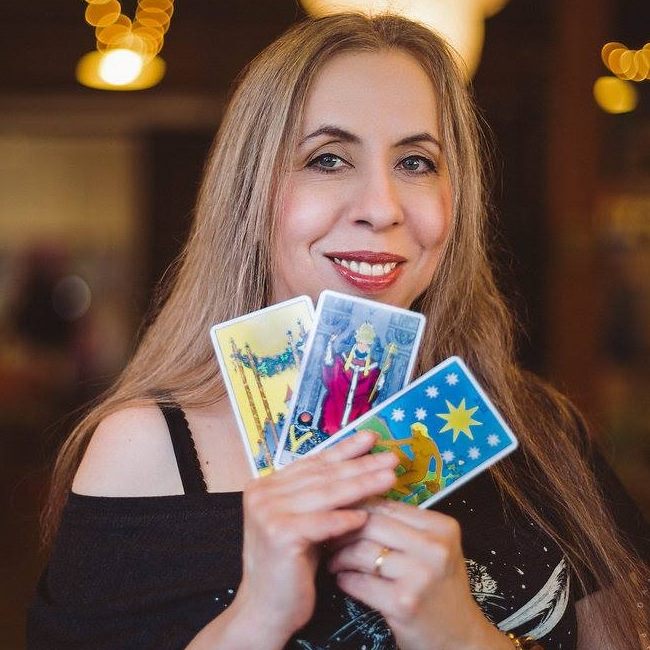 Theresa Reed (aka “The Tarot Lady”) has been a full-time Tarot card reader for close to 30 years. She is the author of
Theresa Reed (aka “The Tarot Lady”) has been a full-time Tarot card reader for close to 30 years. She is the author of 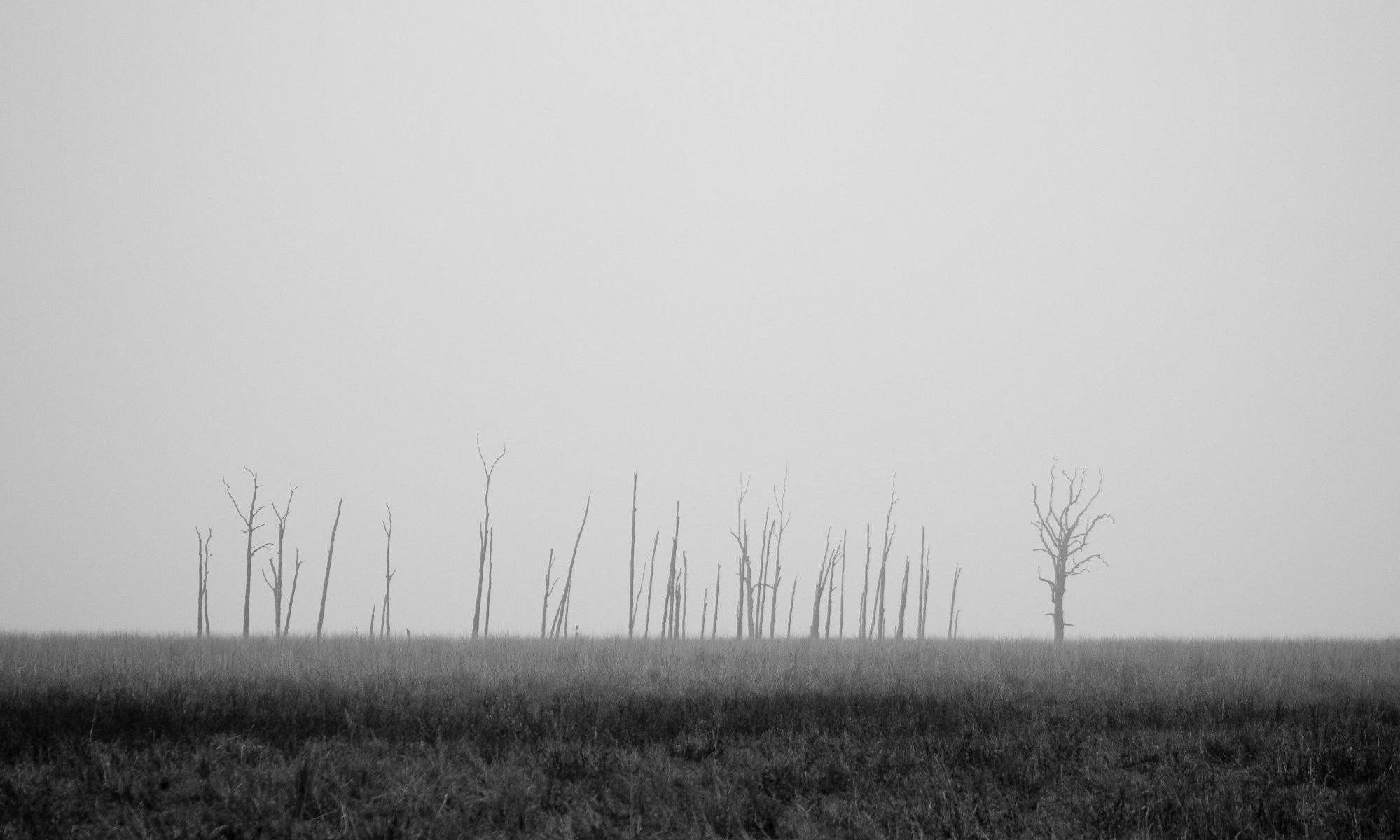
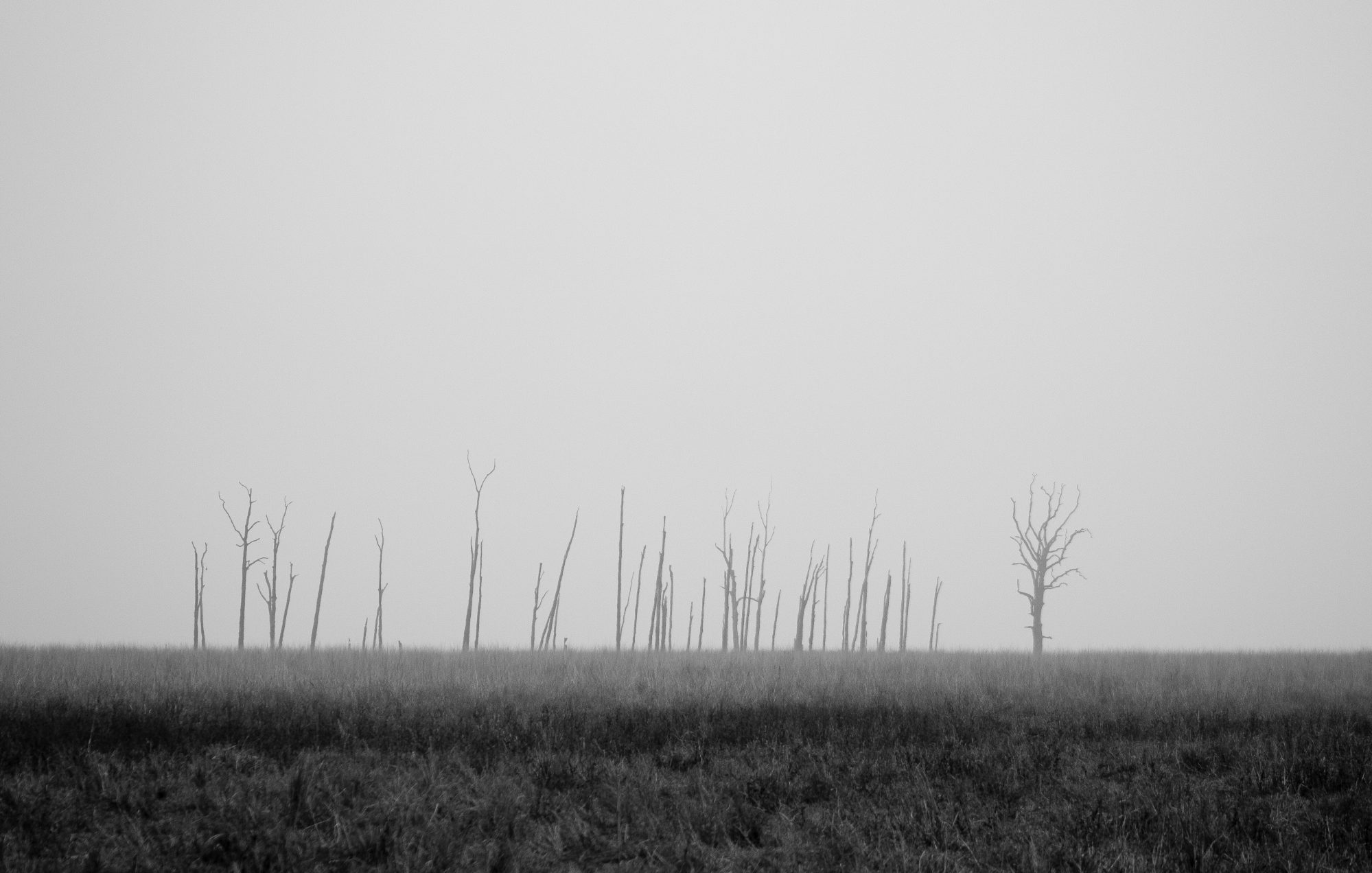
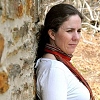 Andi Cumbo-Floyd is a writer, editor, and farmer, who lives on 15 blissful acres at the edge of the Blue Ridge Mountains with her husband, 6 goats, 4 dogs, 4 cats, and 22 chickens. Her books include Steele Secrets, The Slaves Have Names, and Writing Day In and Day Out. The next book in her Steele Secrets Series,
Andi Cumbo-Floyd is a writer, editor, and farmer, who lives on 15 blissful acres at the edge of the Blue Ridge Mountains with her husband, 6 goats, 4 dogs, 4 cats, and 22 chickens. Her books include Steele Secrets, The Slaves Have Names, and Writing Day In and Day Out. The next book in her Steele Secrets Series, 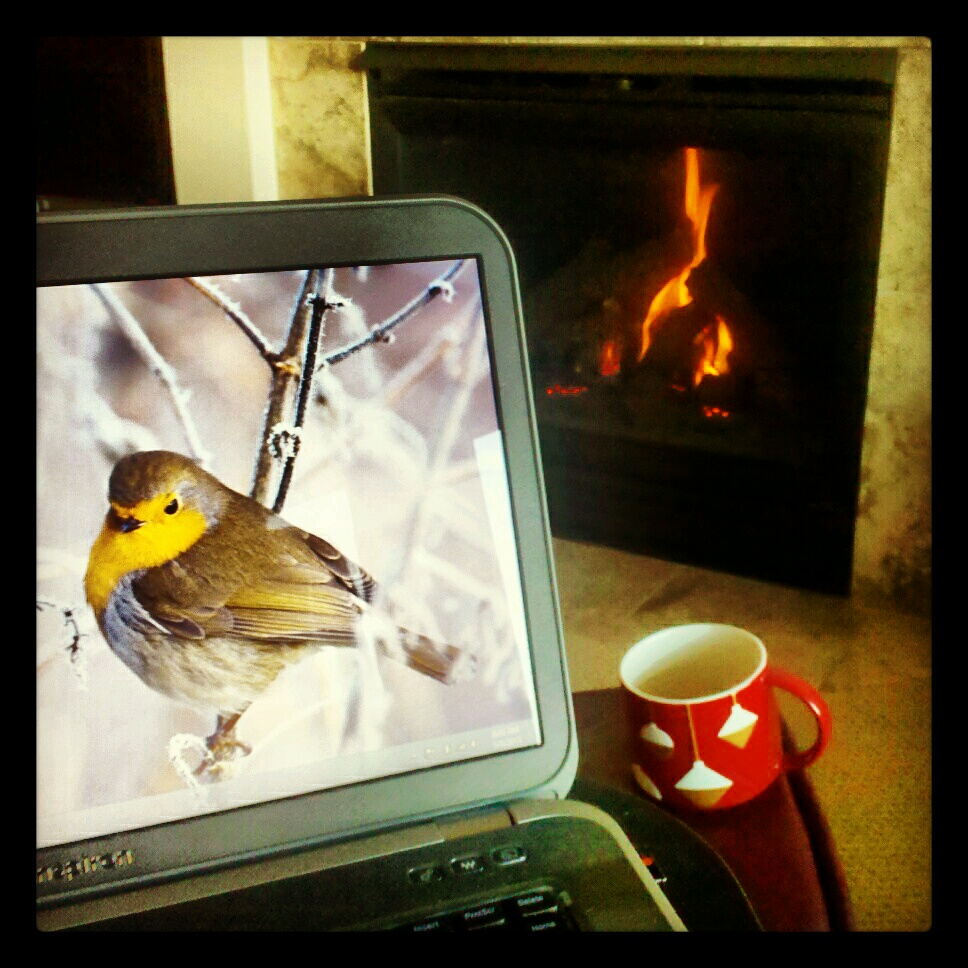

 books. It should have been a pinnacle moment for the year, but once I got beyond the first giddy experience of seeing five years of my work become flesh, I felt like the gardener who’d made the mistake of planting too many zucchini plants in her garden and was secretly leaving baskets of veggies on her neighbor’s porch in the dead of night.
books. It should have been a pinnacle moment for the year, but once I got beyond the first giddy experience of seeing five years of my work become flesh, I felt like the gardener who’d made the mistake of planting too many zucchini plants in her garden and was secretly leaving baskets of veggies on her neighbor’s porch in the dead of night. skirts, pantsuits, and high heels. All clothing I have loved wearing in my past life when I was a full-time consultant. I fantasized about an office Christmas Party! And though we are currently pet-less due to our frequent travel, daily affection – given and received – from well-behaved dogs whenever I wanted!
skirts, pantsuits, and high heels. All clothing I have loved wearing in my past life when I was a full-time consultant. I fantasized about an office Christmas Party! And though we are currently pet-less due to our frequent travel, daily affection – given and received – from well-behaved dogs whenever I wanted! favorite Barista, collects Starbucks Cards from faraway places and have brought him cards from DC and Hawaii for his collection. I know by sight, if not my name, the cashiers at my favorite stores. The ladies at the post office all know me and are genuinely happy to see me when I walk in laden with packages or just to buy some stamps.
favorite Barista, collects Starbucks Cards from faraway places and have brought him cards from DC and Hawaii for his collection. I know by sight, if not my name, the cashiers at my favorite stores. The ladies at the post office all know me and are genuinely happy to see me when I walk in laden with packages or just to buy some stamps. I love that in the evenings, we can cuddle up by the fire with a glass of wine and talk about the day instead of scrambling to pick up the dry cleaning or groceries. Because I manage all the tasks it takes to care for our home, we sleep in, make love, and leisurely enjoy coffee on a Saturday morning instead of me waking with my brain cluttered with a big to-do list.
I love that in the evenings, we can cuddle up by the fire with a glass of wine and talk about the day instead of scrambling to pick up the dry cleaning or groceries. Because I manage all the tasks it takes to care for our home, we sleep in, make love, and leisurely enjoy coffee on a Saturday morning instead of me waking with my brain cluttered with a big to-do list. of sitting with the decision, I tell the head hunter that I am honored. And will not be interviewing for the position.
of sitting with the decision, I tell the head hunter that I am honored. And will not be interviewing for the position.
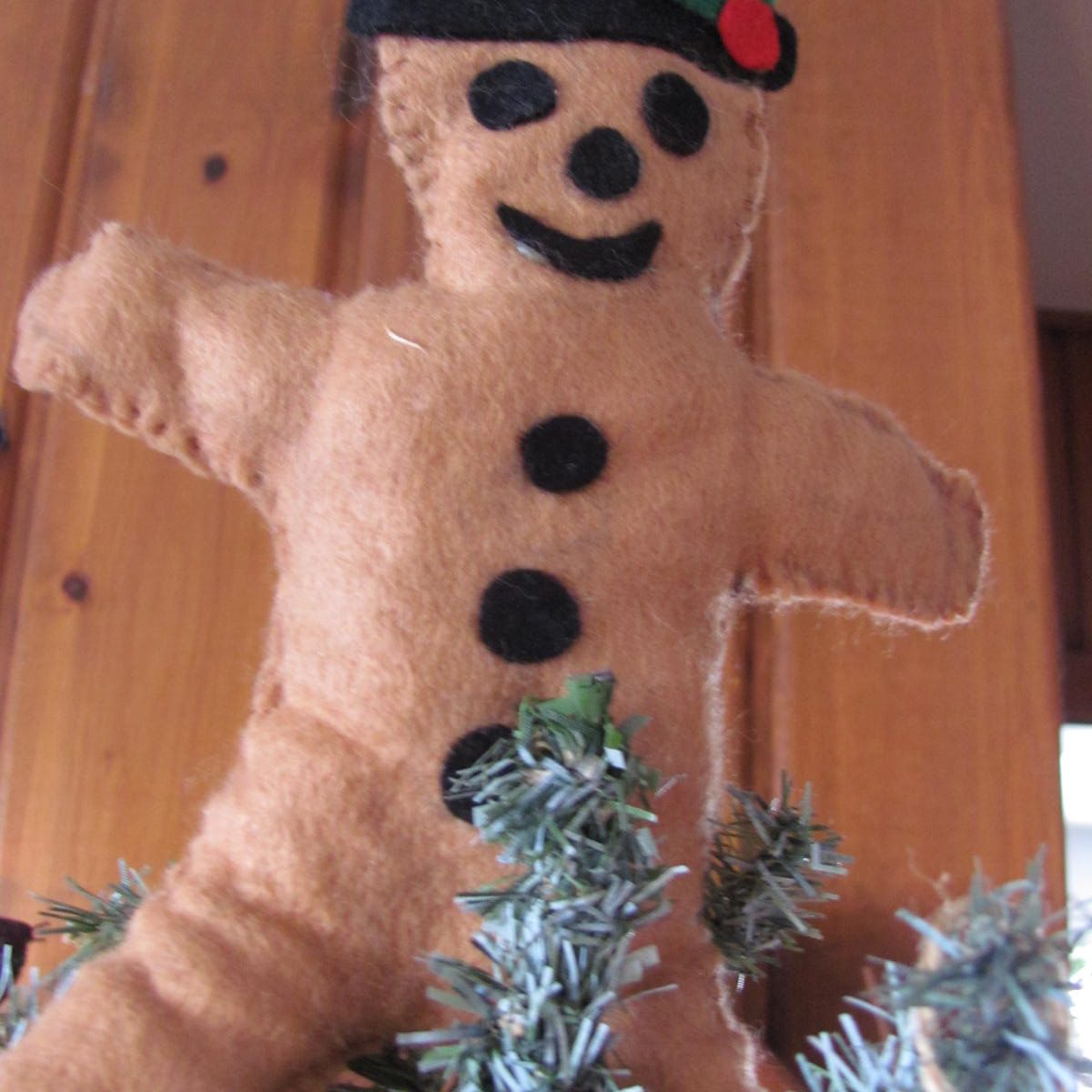
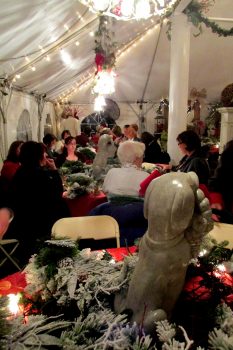
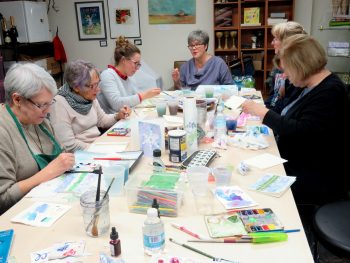 And the best part about this one is that you can do it with anything — the family gathering, your best friend’s party, the experience of baking cookies with the kids.
And the best part about this one is that you can do it with anything — the family gathering, your best friend’s party, the experience of baking cookies with the kids.